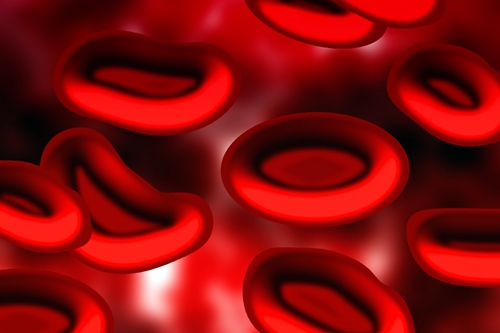23 October 2015. A research team developed a technique with stem cells and gene editing to increase lab production of red blood cells by 3 times, a process that could help people with rare blood types needing transfusions. The researchers led by pediatrics professor Vijay Sankaran at Dana-Farber Cancer Institute and Harvard Medical School published their findings yesterday in the journal Cell Stem Cell (paid subscription required).
Sankaran and colleagues from Harvard, affiliated research centers, and other institutions in the U.S. and Germany, are seeking a technique to economically produce red blood cells from stem cells, which while technically possible is so far too expensive — $8,000 to $15,000 per unit — to be practical. A feasible process for generating red blood cells from stem cells, say the researchers, can help people with rare blood types or disorders that prevent the use of transfusions from blood donors.
The team started with a genome-wide association study that scans computerized genomic databases to find genetic variations linked to specific diseases, which pointed to a gene known as SH2B3. This gene encodes a number of proteins including those promoting production of blood cells. As noted by Sankaran in a Dana-Farber statement, “if you look at people with really high red blood cell levels, they often have rare SH2B3 mutations. That said to us that here is a target where you can partially or completely eliminate its function as a way of increasing red blood cells robustly.”
With SH2B3 as the target, Sankaran and colleagues first tried RNA interference to block the gene’s activity. RNA interference, or RNAi, is a natural process to silence the expression of genes causing disease. RNA is genetic material related to DNA that the body uses to transmit genetic information to cells and synthesize proteins. RNA interference targets specific genes, while minimizing damage to other genes.
The team treated adult blood-forming stem cells and stem cells from umbilical cord blood with RNAi, and succeeded in producing up to 5 times more red blood cells with adult stem cells and up to 7 times more red blood cells with stem cells from cord blood. In addition, the characteristics and quality of the stem cell-produced red blood cells matched a comparison set of natural blood cells.
While the RNAi technique seemed to produce small quantities of red blood cells, the researchers found it difficult to scale up the process for larger quantities, making it impractical for clinical use. The team shifted gears to human embryonic stem cells that readily reproduce in the lab, and applied a gene-editing technique to remove the SH2B3 gene. That gene-editing technique is known as clustered, regularly interspaced short palindromic repeats or CRISPR, based on bacterial defense mechanisms that use RNA to identify and monitor precise locations in DNA. CRISPR employs an enzyme known as CRISPR-associated protein 9 or Cas9, where RNA molecules guide Cas9 proteins to specific genes needing the edits.
The team applied CRISPR/Cas9 to remove SH2B3 genes from the human embryonic stem cells, then grew and transformed the edited stem cells in a culture of proteins that encourage red blood cell reproduction. The results show this technique can more easily produce 3 times as many red blood cells than an unedited comparison group of stem cells, with similar quality and characteristics.
Sankaran foresees a scenario where embryonic stem cells with the SH2B3 gene removed are maintained in a culture, then made available to produce red blood cells when needed by patients. Further development of the process is still needed, however, to lower the cost to feasible commercial-scale levels. “This is allowing us to get close to the cost of normal donor-derived blood units,” says Sankaran. “If we can get the costs down to about $2,000 per unit, that’s a reasonable cost.”
Read more:
- Hydrogel Aids Stem Cells Repair Heart Functions
- Seattle Children’s, Biotech Collaborate on Gene Editing
- Genome Editing Biotech Gains $70M in Venture Funds
- Robotics Harnessed to Produce Adult Stem Cells
- Stem Cells Treat Vision Disorders in Animal Tests
* * *


 RSS - Posts
RSS - Posts
[…] Gene Editing Boosts Red Blood Cell Output in Lab […]
[…] Gene Editing Boosts Red Blood Cell Output in Lab […]